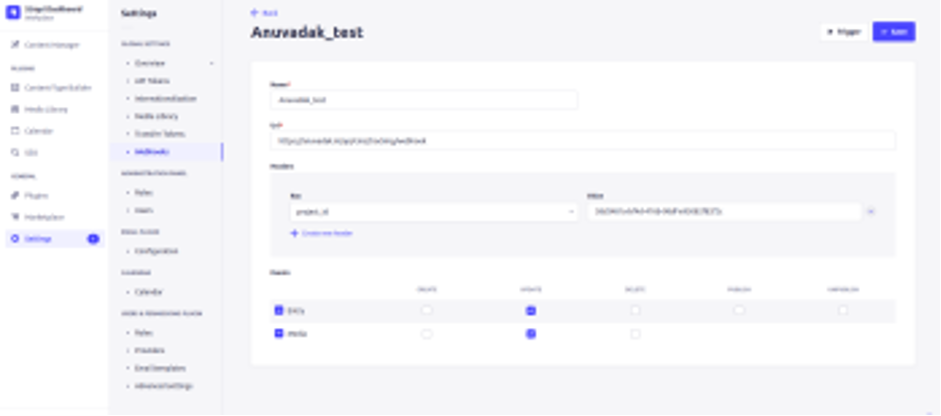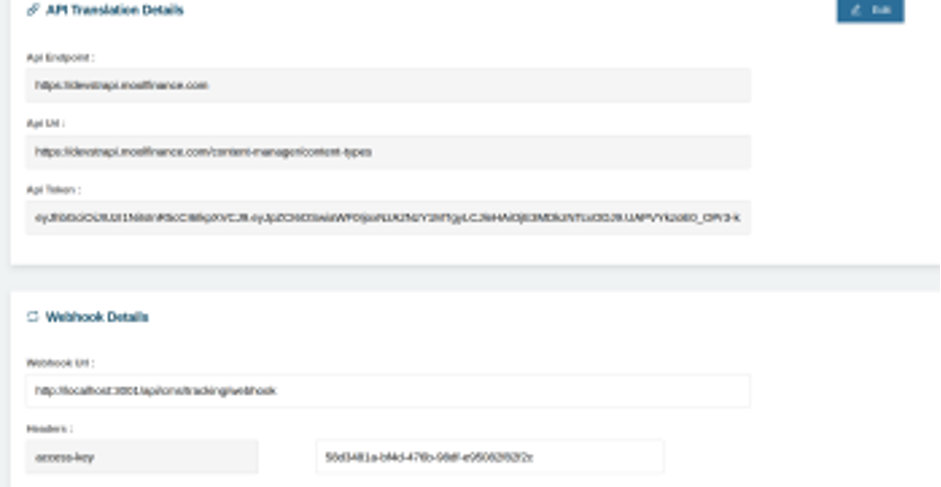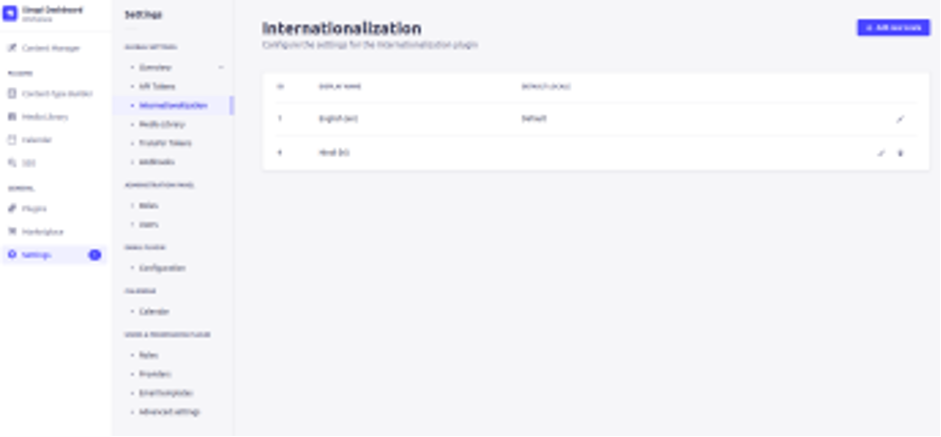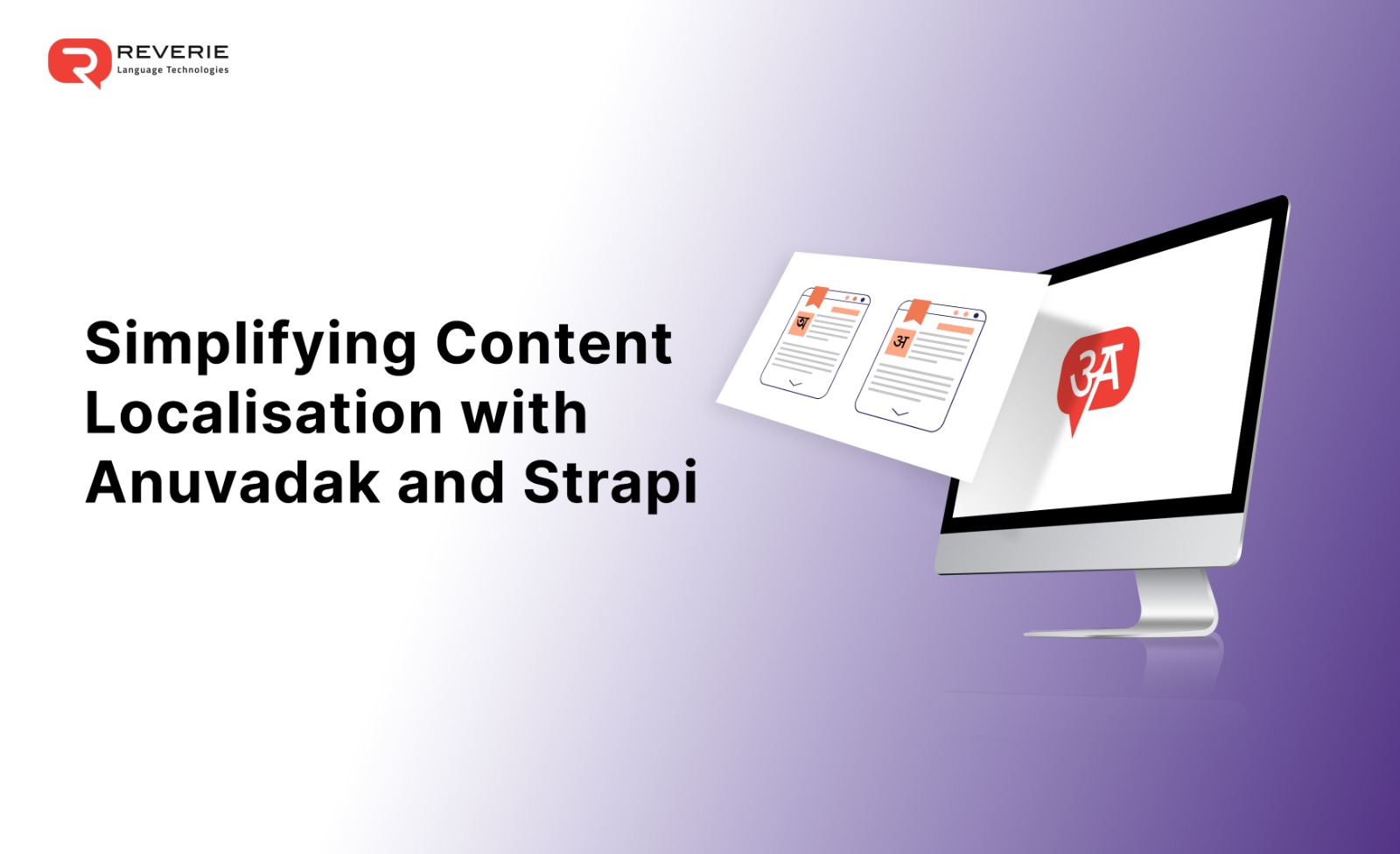An astonishing 76% of consumers prefer products from websites that provide information in their native language. This reinstates the importance of content localisation. As businesses aim to expand their global reach, they face the challenge of not only translating text but also adapting all communication elements to align with cultural and linguistic nuances.
This comprehensive approach involves not only translating text but ensuring that all aspects of communication—visuals, measurements, and cultural references—are precisely tailored to resonate locally. But have you ever wondered how seamlessly integrating such tailored content could enhance your market penetration and customer retention?
Here is your comprehensive guide on how the integration of Anuvadak and Strapi can simplify your content localisation process.
Strapi: The Headless CMS
Strapi emerges as a leading open-source, headless Content Management System (CMS), designed to empower developers with its API-driven approach and customisation capabilities.
A headless CMS is a back-end-only content management system that makes content accessible via an API for display on any device, without a built-in front-end or presentation layer. This allows content to be used across different platforms and devices.
Strapi enhances this flexibility by offering developers full control over the API, enabling them to build and manage their content structures effectively. The customisable nature of Strapi means that it can be tailored to fit specific project requirements, making it an ideal choice for content managers and developers who need a robust, scalable solution for content management.
Understanding the Intricacies of Localisation
Localisation is essential for businesses aiming to succeed globally. It goes beyond simple translation, modifying the text to make it emotionally and culturally relevant to viewers around the world. By reflecting local preferences in language, visuals, and cultural nuances, organisations can significantly enhance user engagement and trust.
Localisation not only makes a business culturally relevant but also broadens its market reach. As discussed earlier, studies show that most consumers prefer content in their native language. 65% of customers prefer content in their language, even if it’s poor quality underlining the direct impact of localisation on sales and market penetration. Businesses that localise effectively see an uplift in brand loyalty, which translates into sustained revenue growth.
Likewise, a well-localised website boosts SEO rankings by aligning content with local search behaviours and keywords, driving more traffic. This approach demonstrates a commitment to each market’s specific needs. It promotes a stronger connection and enhances customer satisfaction, leading to increased global competitiveness.
Strapi and the Search for Efficient Localisation
- Strapi excels in simplifying content localisation for businesses expanding globally. As a headless CMS, it provides essential tools that streamline the management and adaptation of content across different markets. Strapi’s Internationalisation plugin is a cornerstone feature, enabling businesses to create, manage, and publish content in multiple languages efficiently.
- Role-based access control is a key feature of Strapi, ensuring that changes in content for one market do not affect other markets. This feature allows specific roles within the organisation to manage translations and adaptations without risking consistency across the global platform.
- Strapi supports the handling of various formats and standards, such as different currencies, date formats, and measurement units, vital for businesses operating in international markets. This adaptability makes Strapi particularly valuable for ensuring that localised content aligns with the cultural and regulatory norms of each target market.
- Using Strapi can significantly reduce the complexity of localising content, making it easier for businesses to connect with international audiences in a meaningful and compliant manner. This contributes to a better user experience and, ultimately, to a stronger global market presence.
Anuvadak's Role in Strapi's Global Strategy/ Anuvadak's Role in Strapi's Global Localisation Strategy
Anuvadak is a platform designed by Reverie Language Technologies to streamline and enhance website localisation and translation. This makes it an integral tool for global content management. Its capabilities are aimed at reducing manual effort and workload significantly.
The key features of Anuvadak are highlighted here in brief:
- Efficiency in Editing and Updates- Anuvadak offers a user-friendly interface that facilitates easy proofreading, editing, and updating of all translated content.
- Automatic Translation Suggestions- The platform provides automatic suggestions for translated and transliterated content, improving the accuracy and context of translations.
- Reduced Manual Workload- Anuvadak’s efficient automation tools can reduce manual translation and content management workloads by up to 90%
How to setup the Anuvadak-Strapi?
Here is your detailed guide to localise and manage the translation of the Strapi CMS content using the Anuvadak webhook integration.
Access your Strapi dashboard, and navigate to Settings -> Internationalisation. Click the “Add New Locale” button and enter the regional language code.
Next, proceed to the Content Type Builder, select either a collection or single type, and click on the “Edit” button. In the advanced settings, ensure that the “Enable Internationalisation” option is selected.

Check if internationalisation is enabled for all the input fields you wish to translate.

For each field, click on the edit icon and activate the “Enable localisation for this field” option in the advanced settings.

Enable the create, create localisation, and update API.
Go to Setting → In USERS & PERMISSIONS PLUGIN click on (Roles)→ Click on Public in Permission to enable the “find, update & createLocalisation” API route

*Once all the mentioned below set up Auvadak as mentioned below.
Anuvadak Project Creation:
Directions: Projects > Create Project > API (radio box). Provide the below-mentioned details to create the Strapi project.
- Environment- Environment of that project like development or production Env.
- Target Language- Provide the languages in which localisation is required. API
- Endpoint- Provide the base URL of that website. (do not include “/” at the end).
- Content-Type- select the content type like CMS or dynamic API.
- Organisation- select the organisation.

Please confirm the API details following the successful project setup by clicking the “API Verification” button.

After a successful verification, the API details will be automatically retrieved from Strapi.

API Data Sync Process:
- Navigate to the API list page and click on the “+” button to select the necessary fields from the specific API.
- After selecting the fields, click on the “Set Translation Keys” button.
*** Some important keys used in the API.
- View the details of the API by clicking the “View” button.
- To make updates, click the “Edit” button, adjust the keys in the provided input boxes, and then click the “Update” button.
Filed Details:
- Component Keys (Single Component)- List the names of fields in the single component.
- Repeatable Keys (Repeatable Component)- List the names of the fields in repeatable components.
- Media Keys- List the names of media fields (such as images, videos, etc.).

Apply translations to the synchronised content under the “Static Content” tab.
Content Updation to Translation:
- To upload the translated content, click on the “Upload” button for the specific API.
- Select the desired language, and confirm by clicking the “OK” button.

Anuvadak Webhook Integration In Strapie:
Configure the webhook to automate translations in Anuvadak whenever the content is modified on the Strapi platform.
Directions: Go to Settings-> Webhooks-> Create a new webhook.
Set up a webhook within the Strapi webhook dashboard specifically for Anuvadak, enabling automatic content translation and updates by selecting update events.

Refer to the “Webhook Details” on the Anuvadak project details page to update the necessary information.

Webhook Details:
Copy the webhooks present in Anuvadak and add them to the Strapi CMS.
- Url → Anuvadak webhook url.
- project_id → project key for that particular project.
- Event → Enable the “update” checkbox in both the entry and media fields.
Once all details are entered, click the “save” button to store your settings.
You have now configured your Strapi CMS with Anuvadak for multilingual localisation, and it is ready to use.
Why is Anuvadak the Top Choice for Strapi Users?
Strapi, being an open-source, headless CMS that is fully customisable and built on JavaScript / TypeScript, places a strong emphasis on global reach and content

Strapi’s versatility in handling content for various markets makes it a perfect pairing with Anuvadak. Here is why Anuvadak is especially suitable for Strapi:
- Streamlined Content Management- Anuvadak’s ability to manage and streamline translations aligns well with Strapi’s customisable nature. This can allow for seamless integration of localised content across multiple markets.
- Enhanced User Experience- With Anuvadak, Strapi users can easily update and manage localised content. It is crucial for maintaining an engaging user experience on globally targeted websites.
Compatibility with Strapi’s Global Strategy- Strapi’s commitment to global content accessibility and market-specific customisation is complemented by Anuvadak’s robust localisation features. It ensures that content resonates well culturally across different regions.
Strategic Power of Integrating Anuvadak with Strapi
The integration of Anuvadak with Strapi represents a powerful strategic decision for businesses aiming to drive growth through improved global content management. This combination leverages the strengths of powerful localisation and flexible content management platforms to offer a robust solution for businesses targeting international markets.
Following are some of the operational benefits of integrating Anuvadak and Strapi for business growth:
- Enhanced Content Reach and Engagement- Integrating Anuvadak with Strapi enables businesses to manage and localise content effortlessly across multiple markets. This seamless integration ensures that content is culturally and linguistically appropriate, increasing engagement and expanding the reach to a global audience.
- Streamlined Content Management Processes- Anuvadak’s translation and localisation features complement Strapi’s headless CMS capabilities, allowing for centralised management of multilingual content. This streamlined process reduces the workload and complexity of managing content across different languages and cultures, leading to quicker updates and consistent messaging.
- Reduced Time to Market- Businesses can significantly shorten their time-to-market for new content and features. Anuvadak’s automation tool reduces the manual effort required in translation and localisation, while Strapi’s flexible architecture allows quick adaptations and deployments across various platforms and devices.
- Cost Efficiency- The combined use of Anuvadak and Strapi can lead to considerable cost savings. By automating translation processes and reducing dependency on multiple systems, companies can allocate resources more efficiently and reduce operational costs.
- Improved SEO and Online Visibility- Localised content is crucial for effective SEO strategies in different regions. Anuvadak helps ensure that translations are accurate and relevant, boosting SEO performance. Strapi’s ability to manage content across multiple channels further enhances online visibility, drawing more traffic to localised websites.
- Future-Proofing and Scalability- Both Anuvadak and Strapi are designed with scalability in mind, supporting businesses as they grow and expand into new markets. The ability to easily add new languages and adapt to different regional requirements without significant redevelopment makes this integration a long-term solution for global expansion.
Conclusion
Reaching audiences in their language is more than a courtesy; it’s a strategic imperative. With more internet users preferring websites in their native language, localising content can significantly amplify your market reach and engagement. However, managing the nuances of localisation effectively poses a substantial challenge for businesses.
Strapi, with its robust CMS, offers excellent support for internationalisation, but the quest for streamlined and automated localisation solutions continues. Integrating Anuvadak can significantly enhance this process, reducing manual workload and adapting content to meet local nuances effortlessly.
Looking for a solution to transform your global content strategy? Connect with us to witness the power of Anuvadak with Strapi and watch your business thrive globally!


